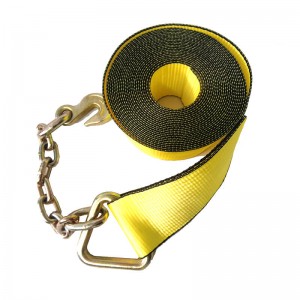Lifting belt production process
Source: www.tzsling.com lifting belt release date: 2020-2-3 | views: 42
1. Full diameter: The same batch of raw materials of the whole shaft must be changed to the standard accessories before the textile hoisting belt is installed on the yarn rack for weaving.
2. Polyester Webbing Belt Under normal circumstances, the workshop will thread (determine the width and thickness of semi-finished products) according to the company’s existing data, and then conduct machine debugging to weave semi-finished products into Webbing belts. For semi-finished products with different tonnage, the number of roots of the threads is different.
If there is a customer’s special custom, according to the customer’s weight, Polyester Webbing Belt broken or width requirements for threading (to determine the width and thickness of semi-finished products), after machine debugging, woven in line with customer needs of semi-finished products; The semi-finished webbing should be slightly wider than the required width after dyeing.

3. The dyeing: The Polyester Webbing Belt rises above a certain temperature and starts the dyeing machine into the Belt. While rising, the Belt moves. Adjust the rotational speed according to the temperature of the dyeing machine and the type of the ribbon. Dyed ribbon can achieve the best results and do not fade. In order to ensure that our fuel can be well colored, so that the finished color of the lifting belt is more natural and uniform, the dye should have a certain temperature, and the temperature range is controlled between 20-50 degrees. The color hoisting belt is completed at the same time during dyeing and baking. The appropriate baking temperature determines the appearance quality of the finished hoisting Belt. Too low temperature leads to incomplete baking of the finished hoisting Belt. The fading phenomenon occurs during the use of the client. So the best baking temperature is around 200 degrees.
4 cutting: according to the length of the finished product hoisting belt to determine the length of semi-finished product webbing, through the ruler to measure the length of semi-finished product, measured, cut with cutting knife, the error range of cutting is ±3%.
5. Sewing: Use a sewing machine to effectively sew the cut semi-finished webbing according to customer’s requirements or company’s requirements. The stitches of the sutures should be flat and smooth, and there is no excess coil on the surface of the lifting belt.
6. Modification: Cut off the exposed threads of the sewn hoisting belt one by one, and then handle with a heat gun. Then cut the end of the lifting belt with the belt machine disc good, tidy up and put well; The thread of the lifting belt is not cut, which not only affects the appearance but also causes the thread to fall off due to the smooth surface of the industrial wire, which leads to the lifting belt can not be used.
7. Packaging: Bind the coiled lifting belt with a baler, then load the bundled lifting belt into the heat shrink film and put the certificate into it for sealing.
8. Packaging: After sealing, the irregular lifting belt is simply arranged with a rubber hammer to make it look good, and the finished lifting belt is put into the thermal shrinkage machine for thermal shrinkage treatment; Finally, according to customer requirements into woven bags or cartons, and do a good job of marking.
Post time: Aug-10-2022
